| Claribel | |
|---|---|
| by Alfred Tennyson | |
| Genre(s) | Romanticism |
| Meter | Iambic trimeter |
| Rhyme scheme | Irregular |
| Publication date |
|
| Lines | 21 |
| Full text | |
"Claribel: A Melody" is an early poem by Alfred Tennyson, first published in 1830. [1]
| Claribel | |
|---|---|
| by Alfred Tennyson | |
| Genre(s) | Romanticism |
| Meter | Iambic trimeter |
| Rhyme scheme | Irregular |
| Publication date |
|
| Lines | 21 |
| Full text | |
"Claribel: A Melody" is an early poem by Alfred Tennyson, first published in 1830. [1]

In the 1830 and 1842 editions the poem is in one long stanza, with a full stop in the 1830 edition after line 8; the 1842 edition omits the full stop. [1] The name "Claribel" may have been suggested by Spenser, [2] or Shakespeare. [3] [1]
Where Claribel low-lieth
The breezes pause and die,
Letting the rose-leaves fall:
But the solemn oak-tree sigheth,
Thick-leaved, ambrosial,
With an ancient melody
Of an inward agony,
Where Claribel low-lieth.At eve the beetle boometh
Athwart the thicket lone:
At noon the wild bee [lower-alpha 1] hummeth
About the moss’d headstone:
At midnight the moon cometh,
And looketh down alone.
Her song the lintwhite swelleth,
The clear-voiced mavis dwelleth,
The callow throstle [lower-alpha 2] lispeth,
The slumbrous wave outwelleth,
The babbling runnel crispeth,
The hollow grot replieth
Where Claribel low-lieth.
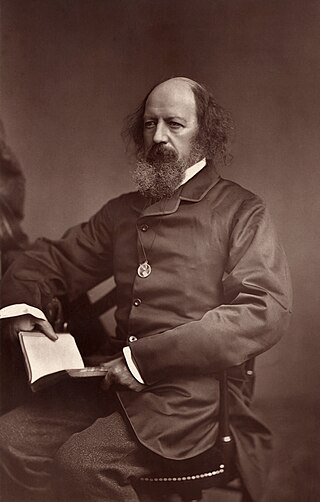
Alfred Tennyson, 1st Baron Tennyson was an English poet. He was the Poet Laureate during much of Queen Victoria's reign. In 1829, Tennyson was awarded the Chancellor's Gold Medal at Cambridge for one of his first pieces, "Timbuktu". He published his first solo collection of poems, Poems, Chiefly Lyrical, in 1830. "Claribel" and "Mariana", which remain some of Tennyson's most celebrated poems, were included in this volume. Although described by some critics as overly sentimental, his verse soon proved popular and brought Tennyson to the attention of well-known writers of the day, including Samuel Taylor Coleridge. Tennyson's early poetry, with its medievalism and powerful visual imagery, was a major influence on the Pre-Raphaelite Brotherhood.

"Ulysses" is a poem in blank verse by the Victorian poet Alfred, Lord Tennyson (1809–1892), written in 1833 and published in 1842 in his well-received second volume of poetry. An oft-quoted poem, it is a popular example of the dramatic monologue. Facing old age, mythical hero Ulysses describes his discontent and restlessness upon returning to his kingdom, Ithaca, after his far-ranging travels. Despite his reunion with his wife Penelope and his son Telemachus, Ulysses yearns to explore again.

John Churton Collins was a British literary critic.
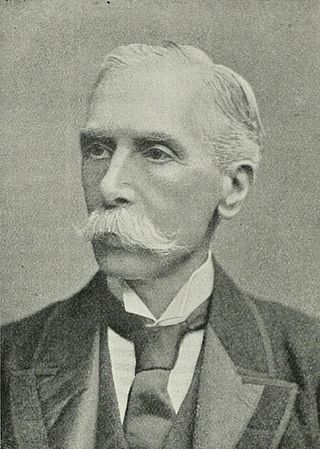
Alfred Austin was an English poet who was appointed Poet Laureate in 1896, after an interval following the death of Tennyson, when the other candidates had either caused controversy or refused the honour. It was claimed that he was being rewarded for his support for the Conservative leader Lord Salisbury in the General Election of 1895. Austin's poems are little remembered today, his most popular work being prose idylls celebrating nature. Wilfred Scawen Blunt wrote of him, “He is an acute and ready reasoner, and is well read in theology and science. It is strange his poetry should be such poor stuff, and stranger still that he should imagine it immortal.”
"Crossing the Bar" is an 1889 poem by Alfred, Lord Tennyson. It is considered that Tennyson wrote it in elegy; the narrator uses an extended metaphor to compare death with crossing the "sandbar" between the river of life, with its outgoing "flood", and the ocean that lies beyond death, the "boundless deep", to which we return.
Nationality words link to articles with information on the nation's poetry or literature.

The Window; or, The Songs of the Wrens is a song cycle by Arthur Sullivan with words by Alfred, Lord Tennyson. Written in 1867–1870, it was eventually published in 1871. There are multiple versions of the title: On the cover of the 1871 edition, the subtitle is given as "The Loves of the Wrens", however, "Songs of the Wrens" is used on the frontispiece and is the one generally used.

"The Two Voices" is a poem written by future Poet Laureate of the United Kingdom Alfred, Lord Tennyson between 1833 and 1834. It was included in his 1842 collection of Poems. Tennyson wrote the poem, titled "Thoughts of a Suicide" in manuscript, after the death of his friend Arthur Henry Hallam in 1833. The poem was autobiographical.

The Princess is a serio-comic blank verse narrative poem, written by Alfred Tennyson, published in 1847. Tennyson was Poet Laureate of the United Kingdom from 1850 to 1892 and remains one of the most popular English poets.
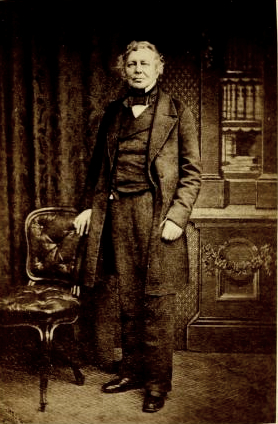
Effingham William Wilson was a 19th-century English radical publisher and bookseller. His main interests were in economics and politics, but he also published poetry.
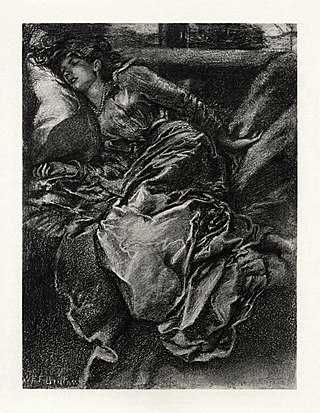
"The Day-Dream" is a poem written by Alfred Tennyson that was published in 1842. It was an expanded version of his 1830 poem "The Sleeping Beauty". It was further altered in 1848 for a dramatic performance for a private gathering with Tennyson starring as the Prince. "The Day-Dream" discusses the nature of sleeping and of dreaming, especially in relation to individuals that would want to escape from reality. The poem also compares the act of poetry with dreaming and asserts that the two are the same.
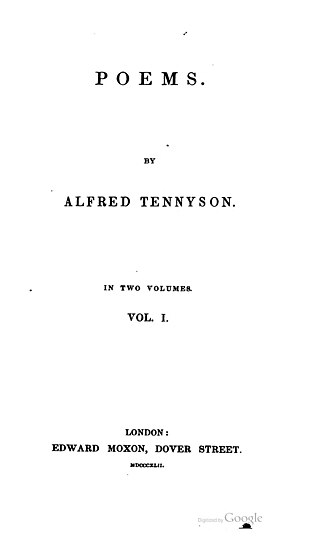
Poems, by Alfred Tennyson, was a two-volume 1842 collection in which new poems and reworked older ones were printed in separate volumes. It includes some of Tennyson's finest and best-loved poems, such as Mariana, The Lady of Shalott, The Palace of Art, The Lotos Eaters, Ulysses, Locksley Hall, The Two Voices, Sir Galahad, and Break, Break, Break. It helped to establish his reputation as one of the greatest poets of his time.
"The Kraken" is a sonnet by Alfred Tennyson (1809–1892) that describes the Kraken, a mythical creature. It was published in Tennyson's Poems, Chiefly Lyrical (1830).
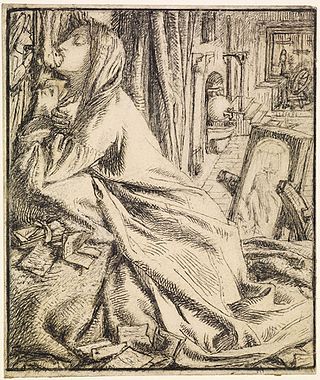
"Mariana in the South" is an early poem by Alfred Tennyson, first printed in 1833 and significantly revised in 1842.

The Miller's Daughter is a narrative poem by Alfred Tennyson, first printed in 1833 and significantly revised in 1842.

"St. Agnes" is a poem by Alfred Tennyson, first published in 1837, revised in 1842, and retitled "St. Agnes' Eve" in 1857.

Lady Clare is a narrative poem by Alfred Tennyson, first published in 1842.
Poems, Chiefly Lyrical is a poetry collection by Alfred Tennyson, published in June 1830.
"Recollections of the Arabian Nights" is an early poem by Alfred Tennyson, first published in 1830.
"The Ballad of Oriana" is an early poem by Alfred Tennyson, published in 1830, but not in 1833.